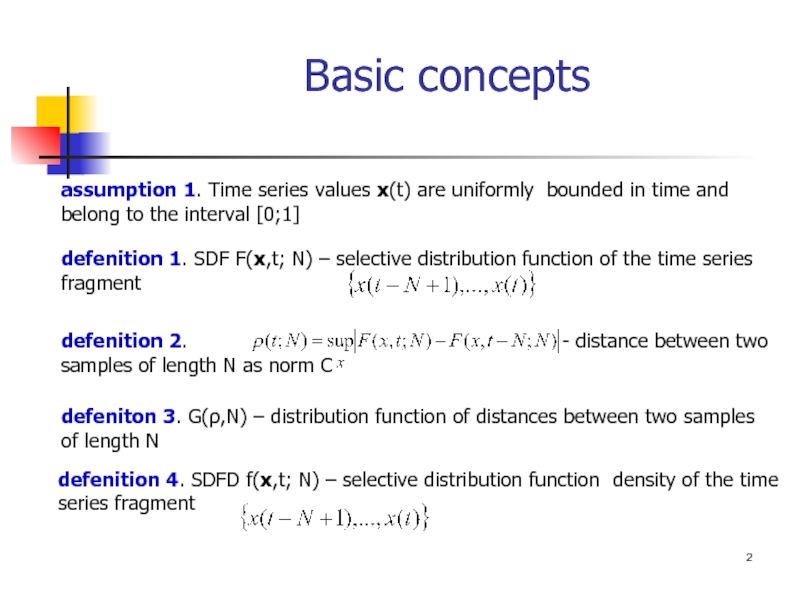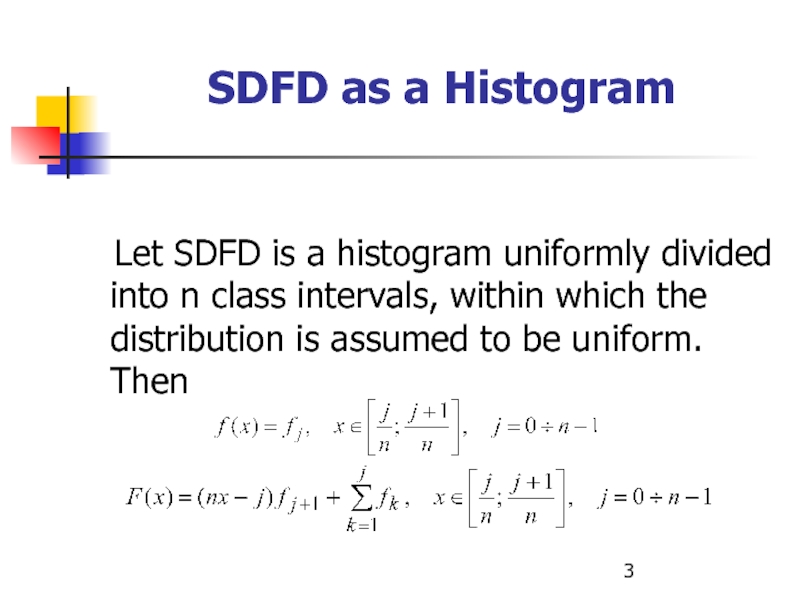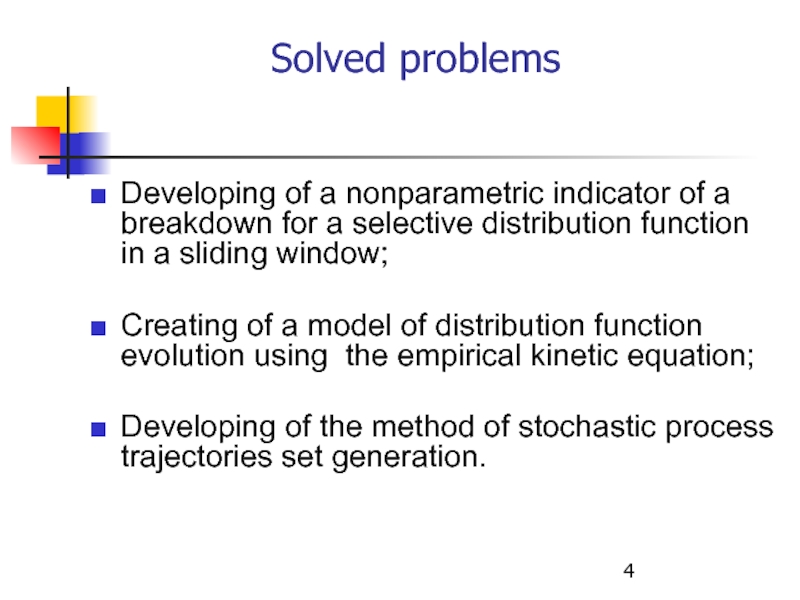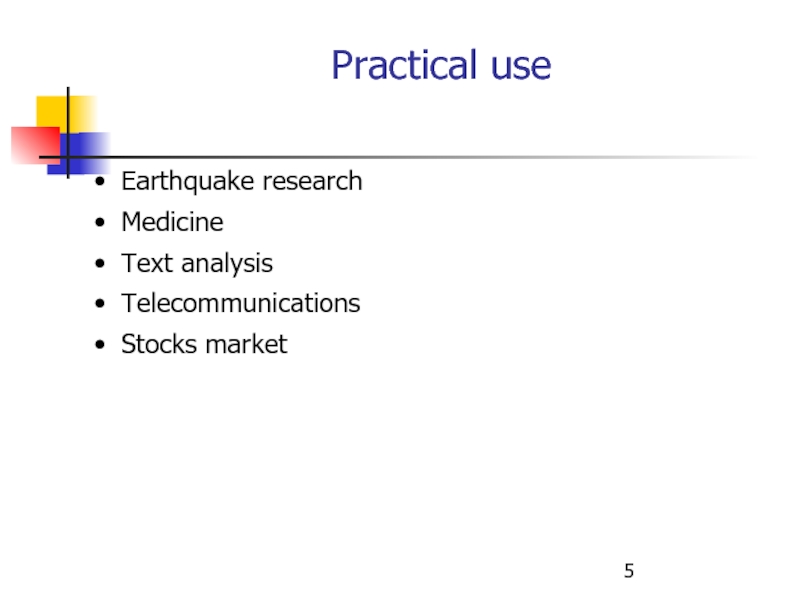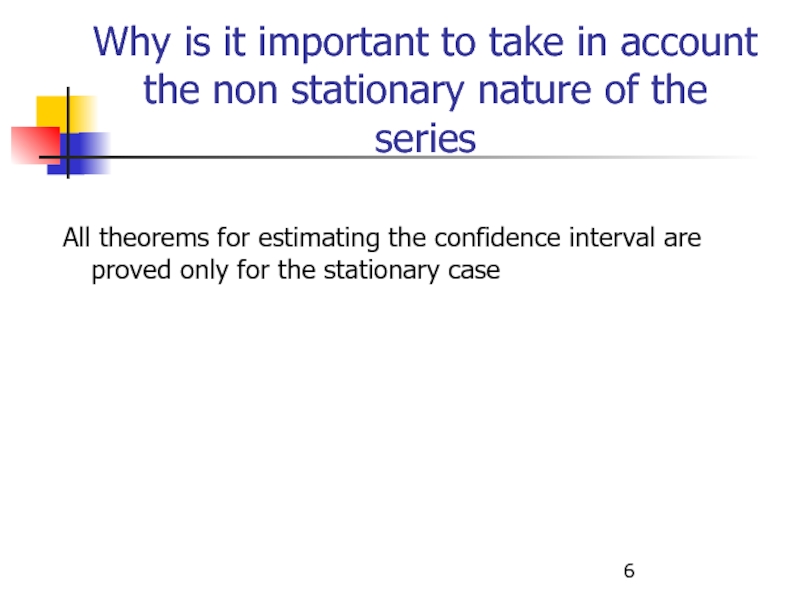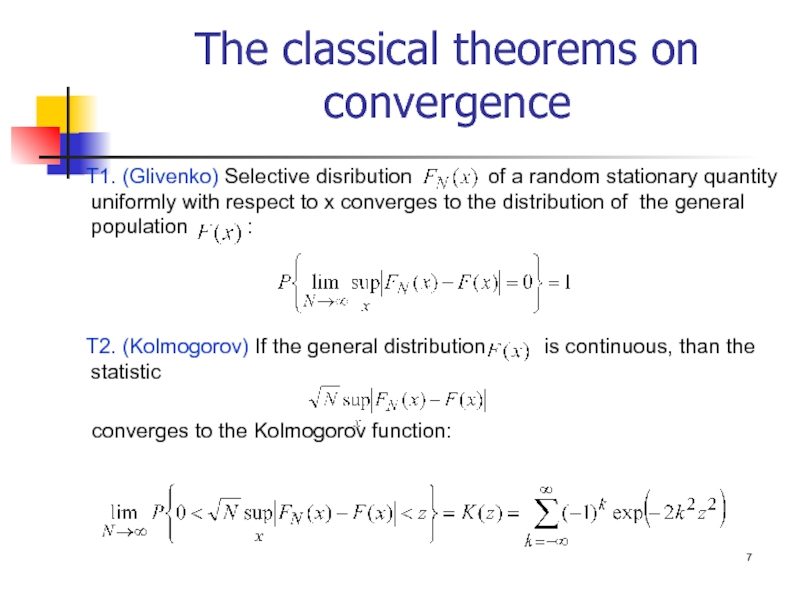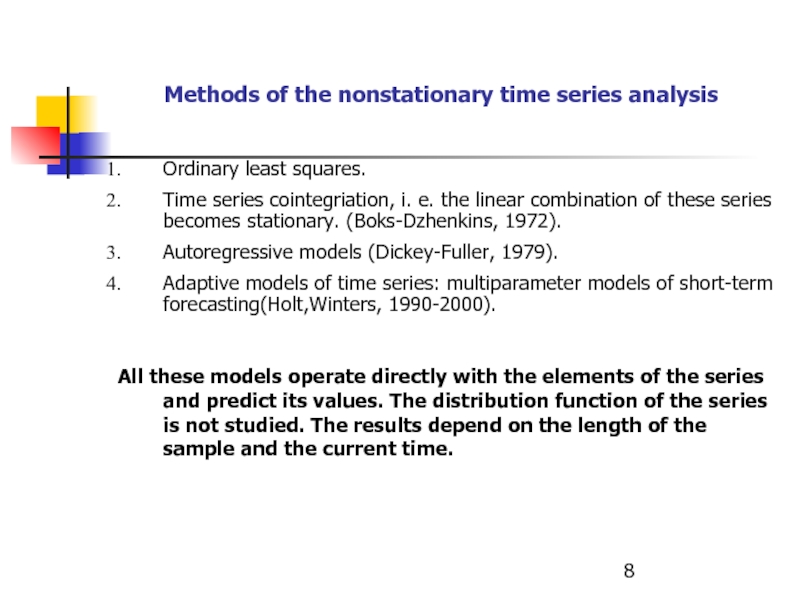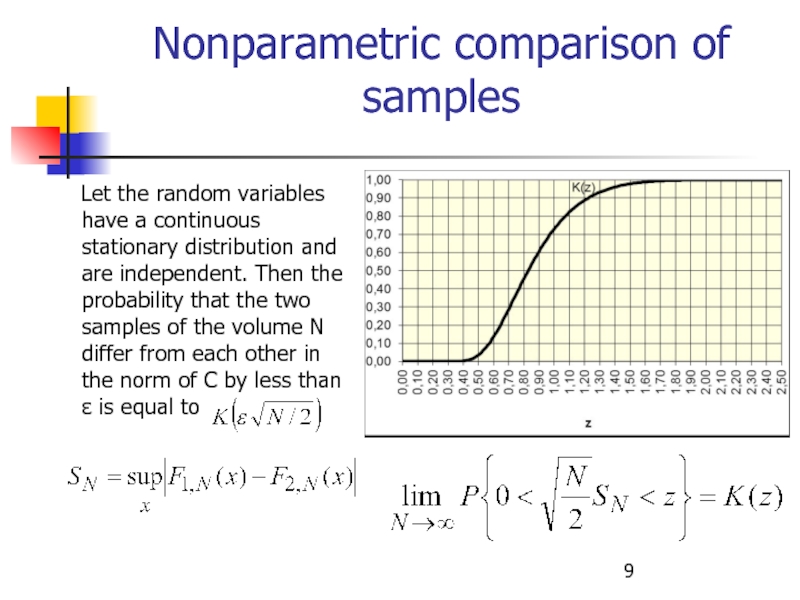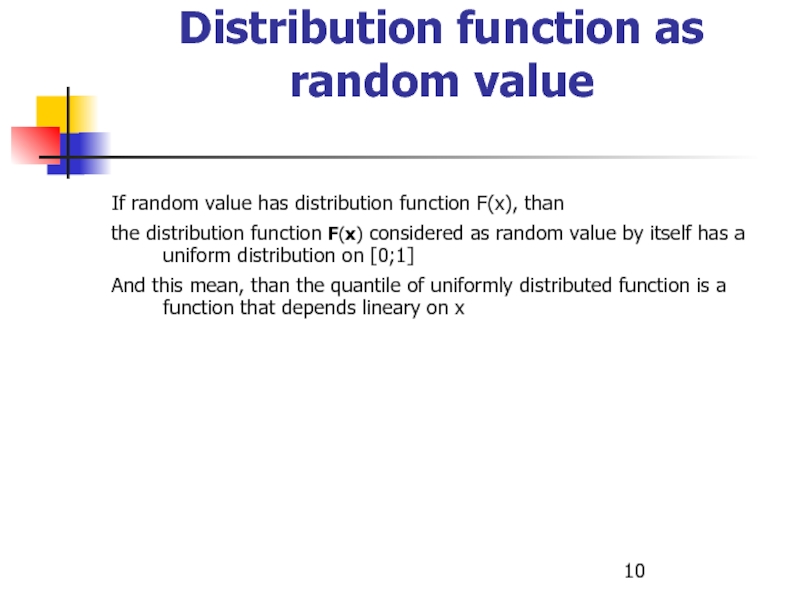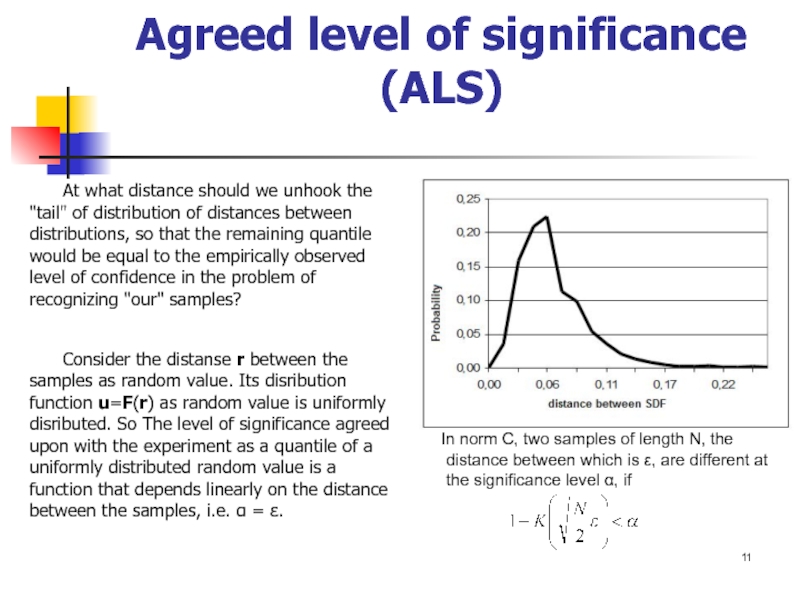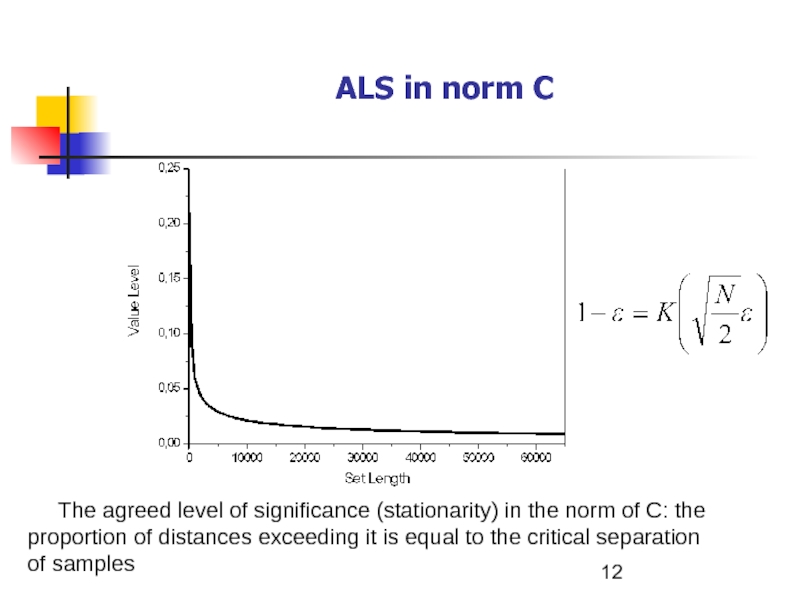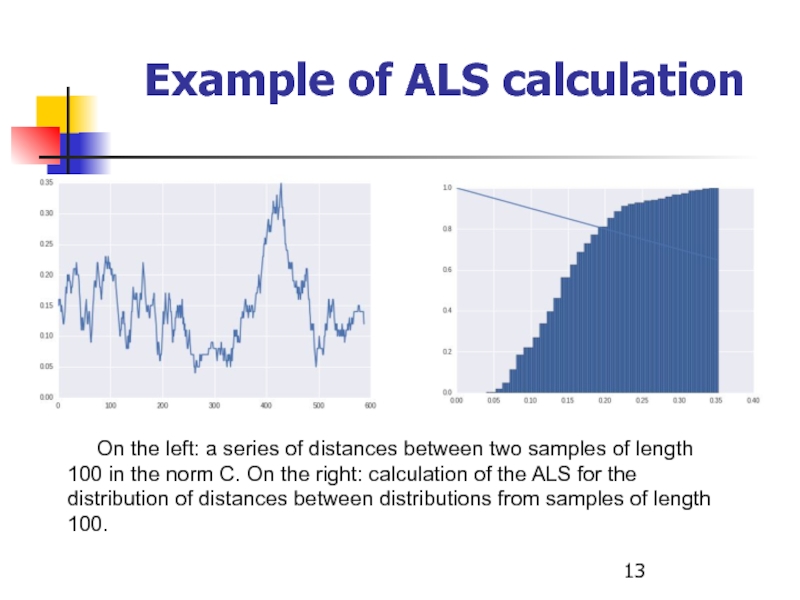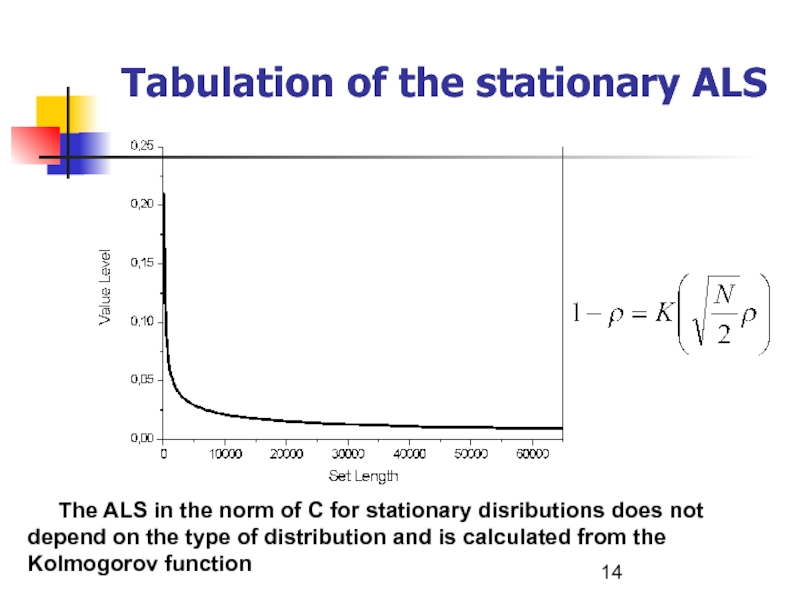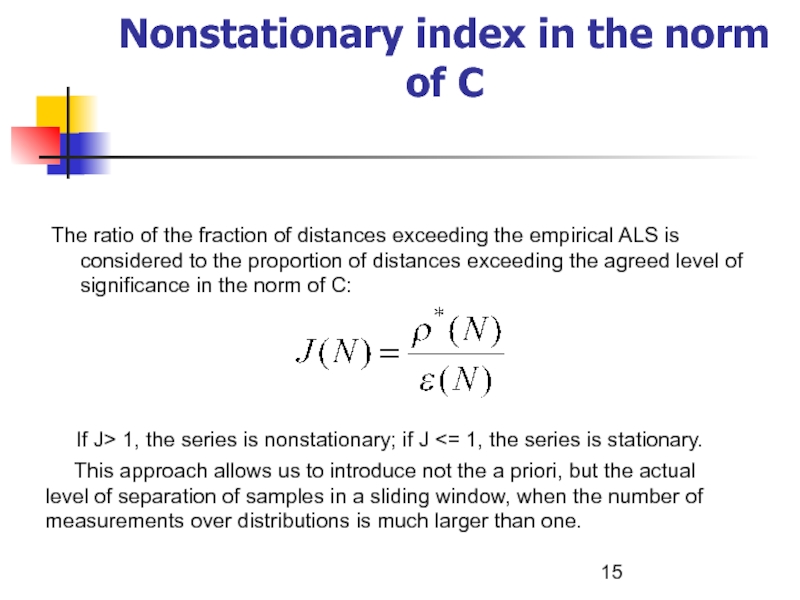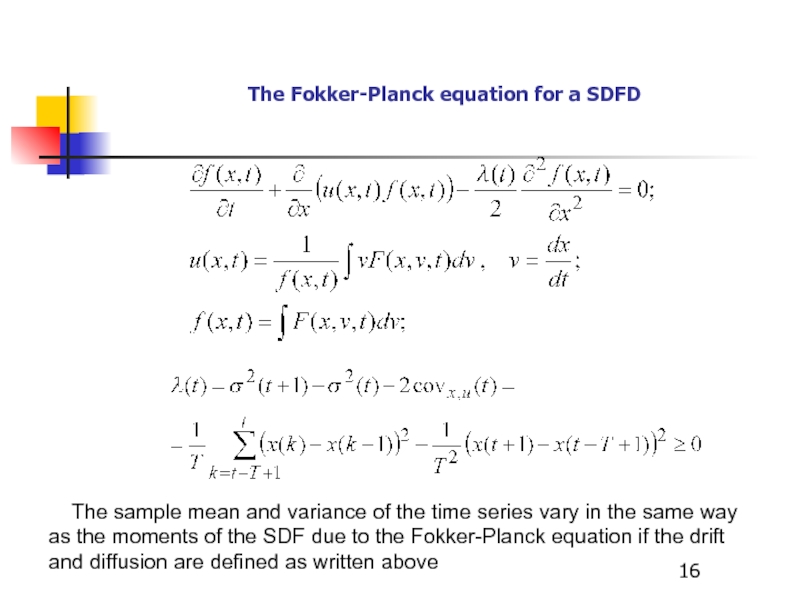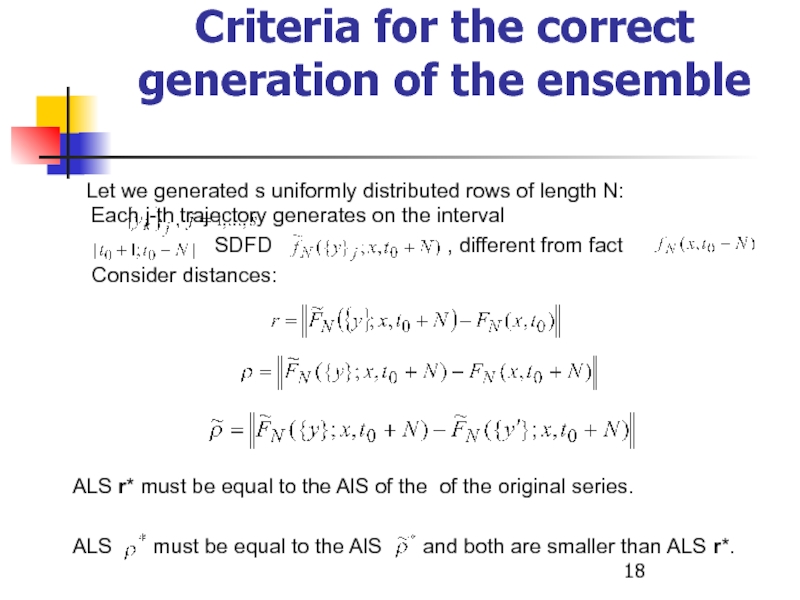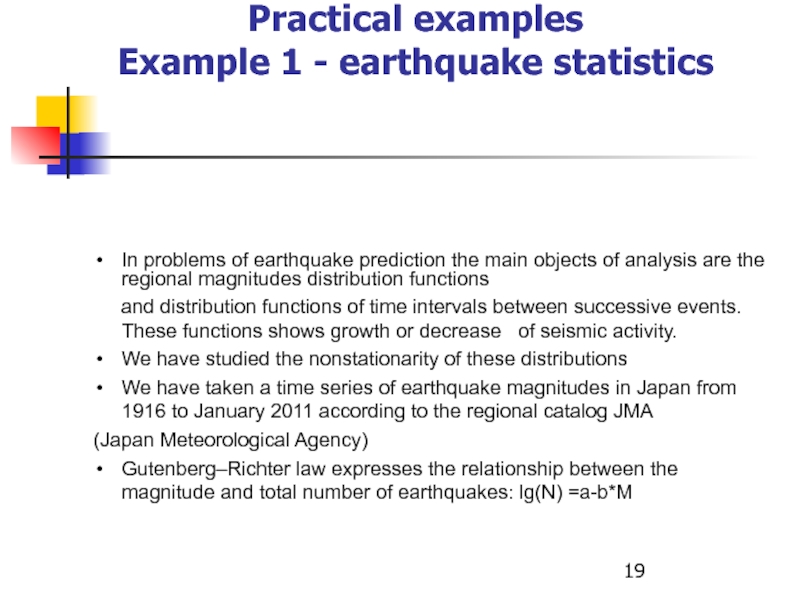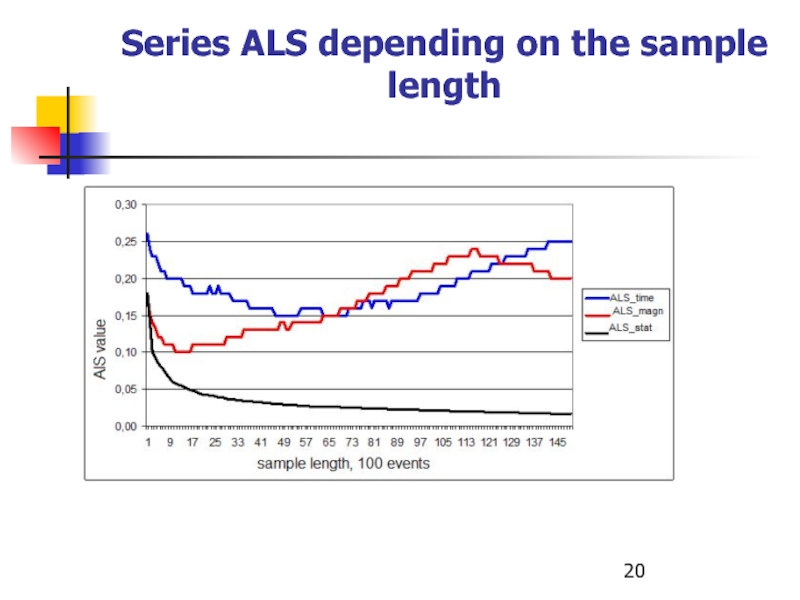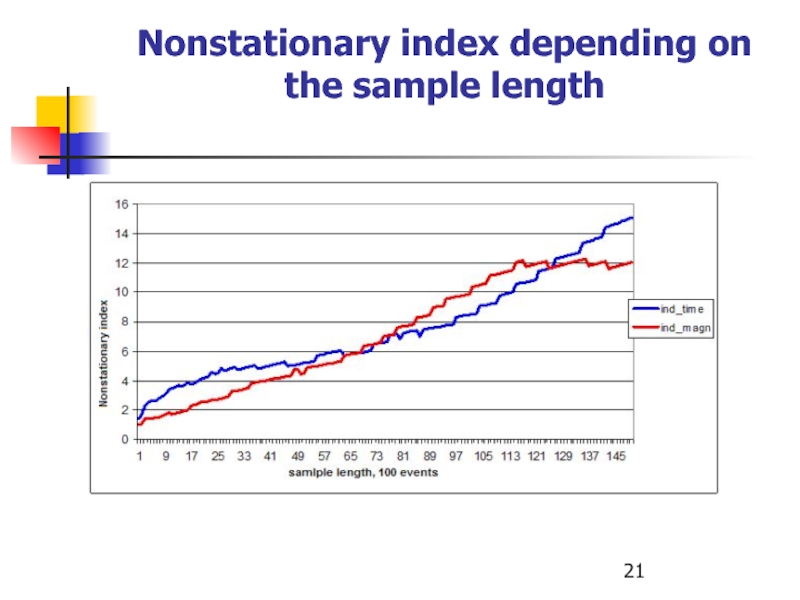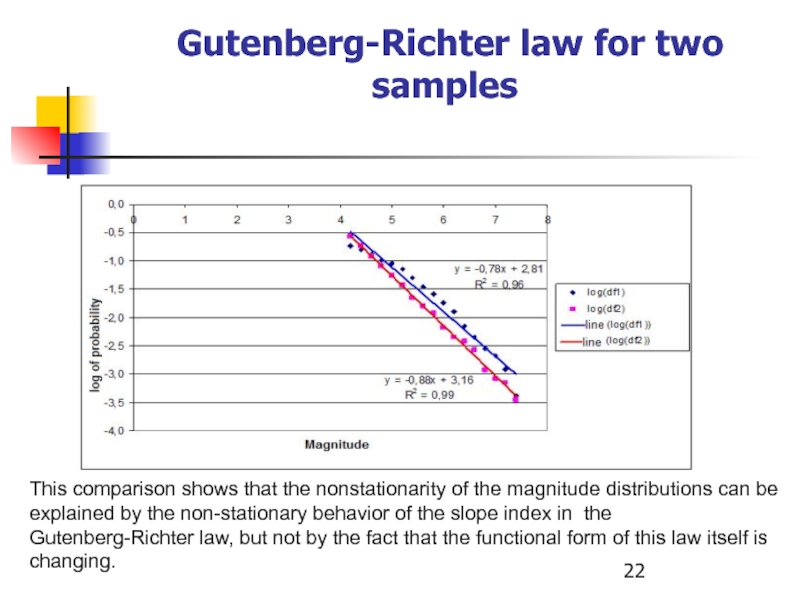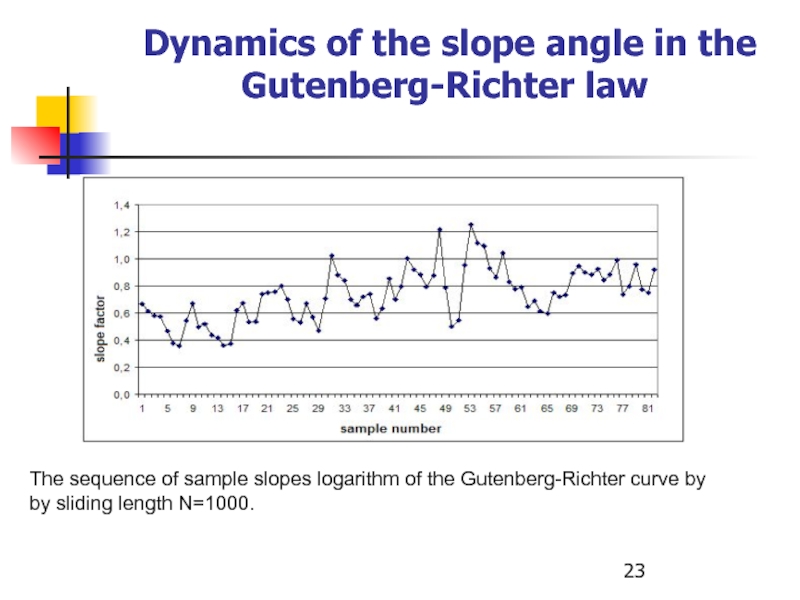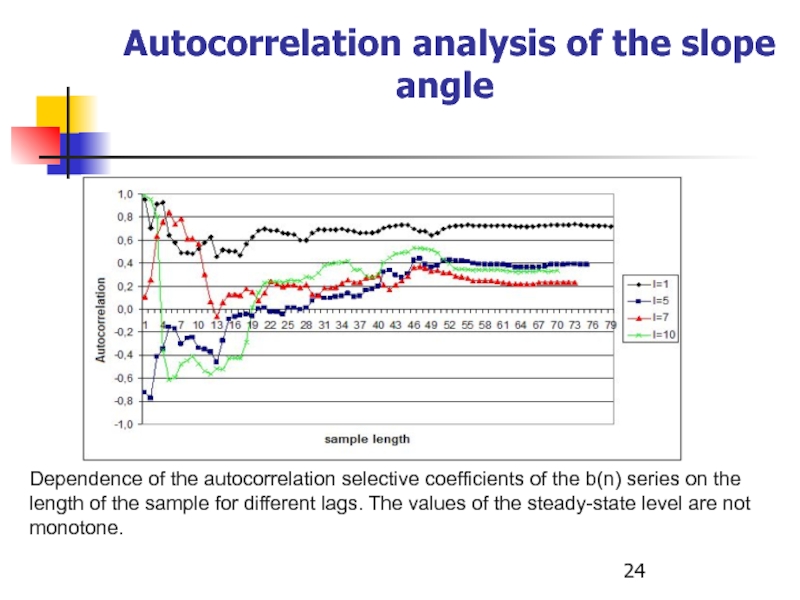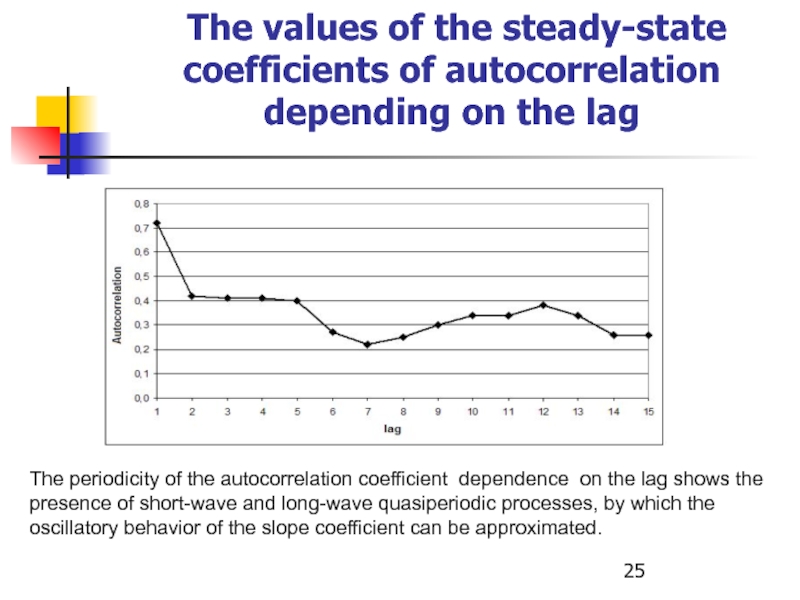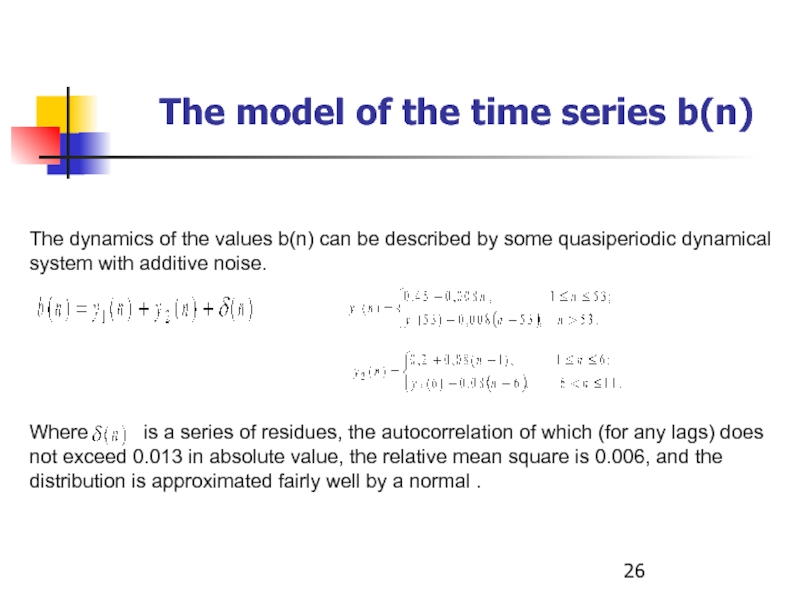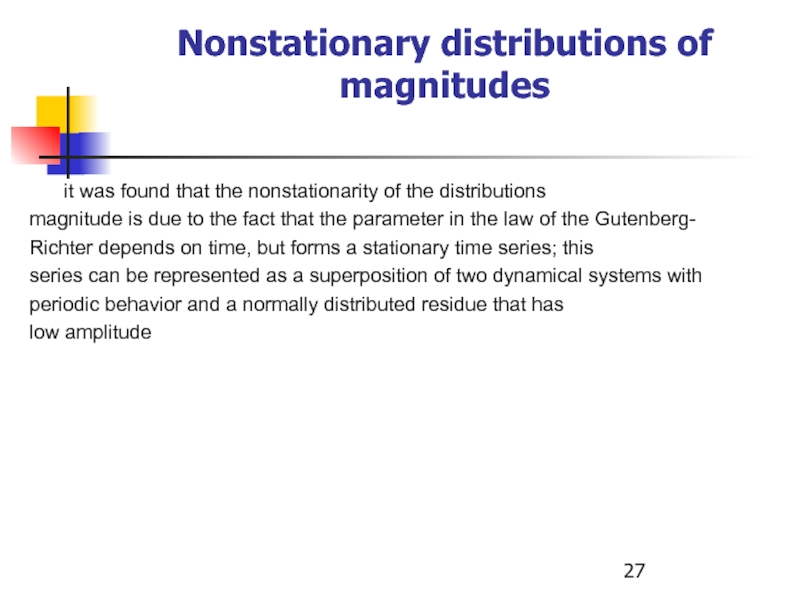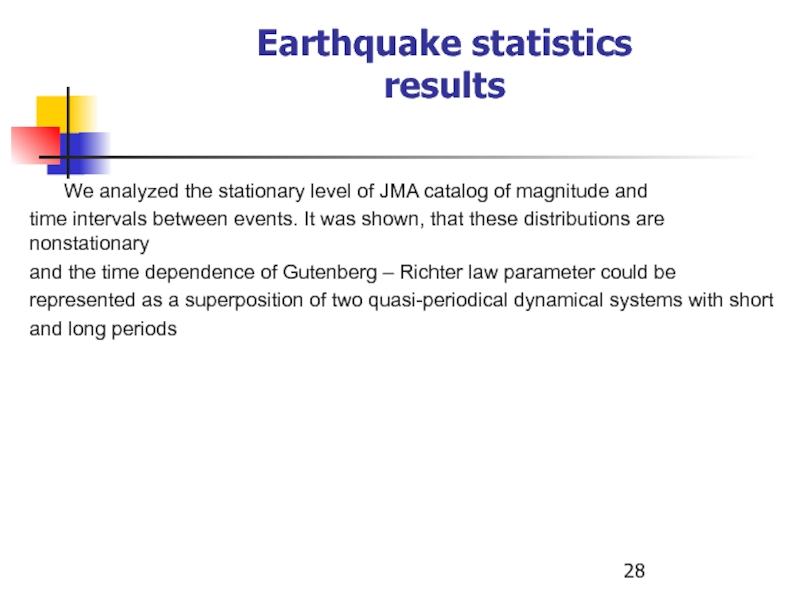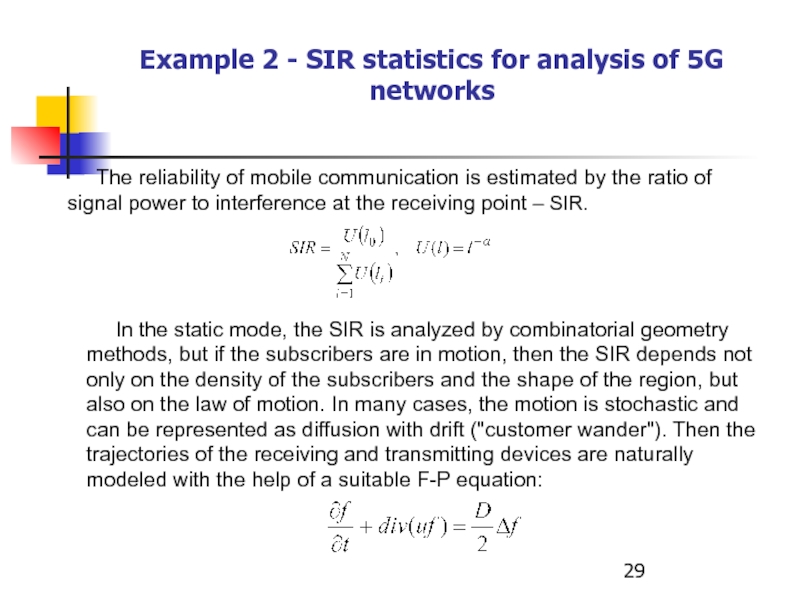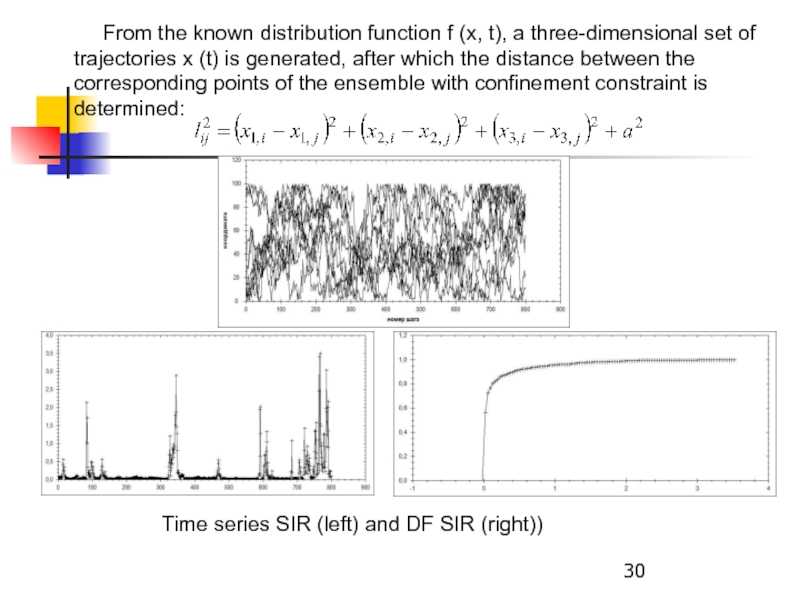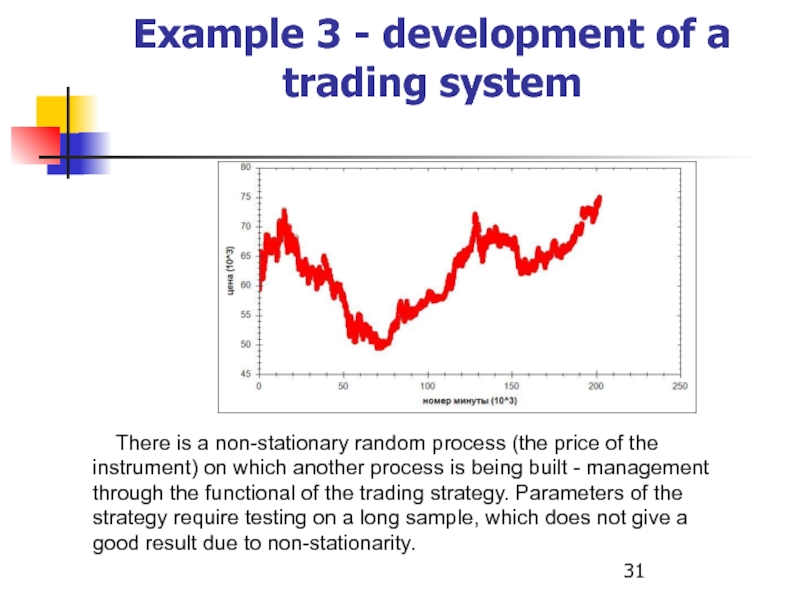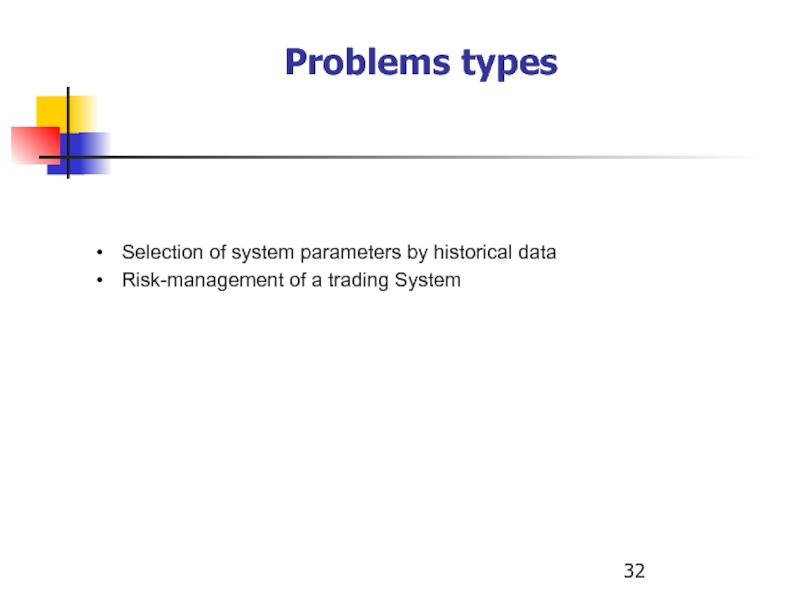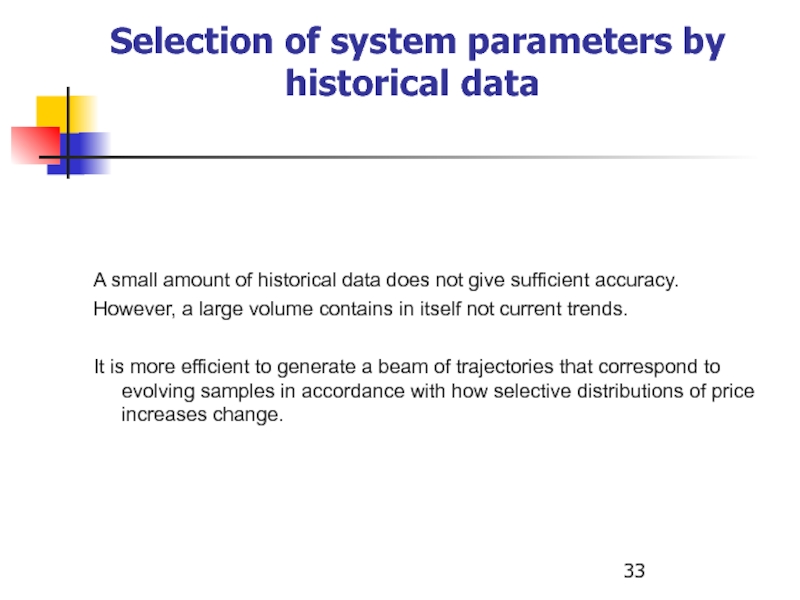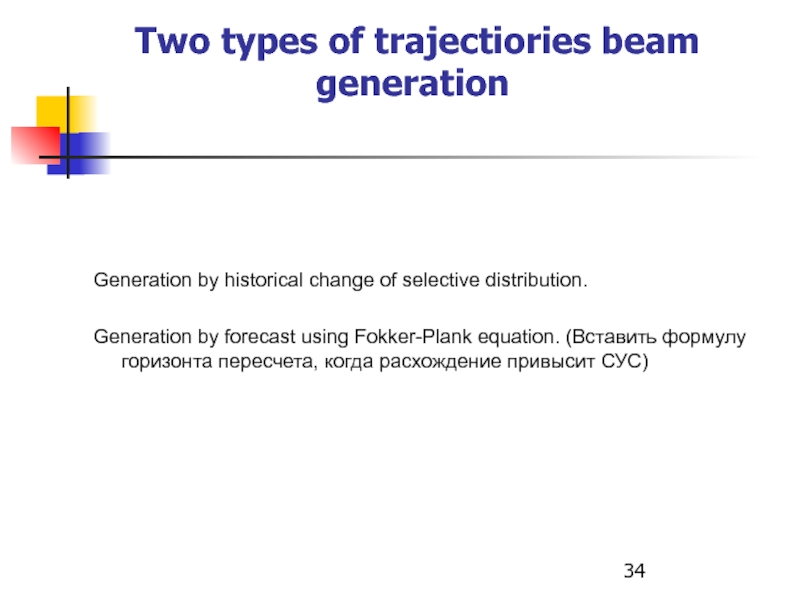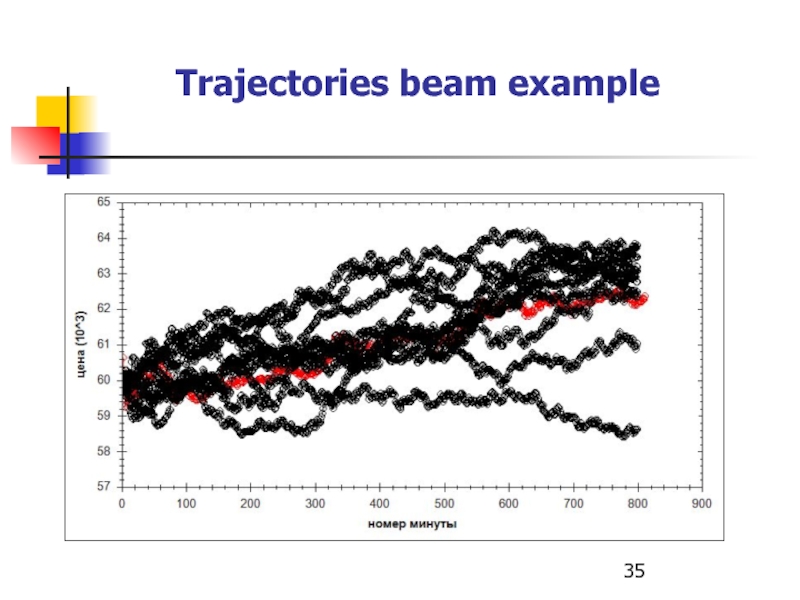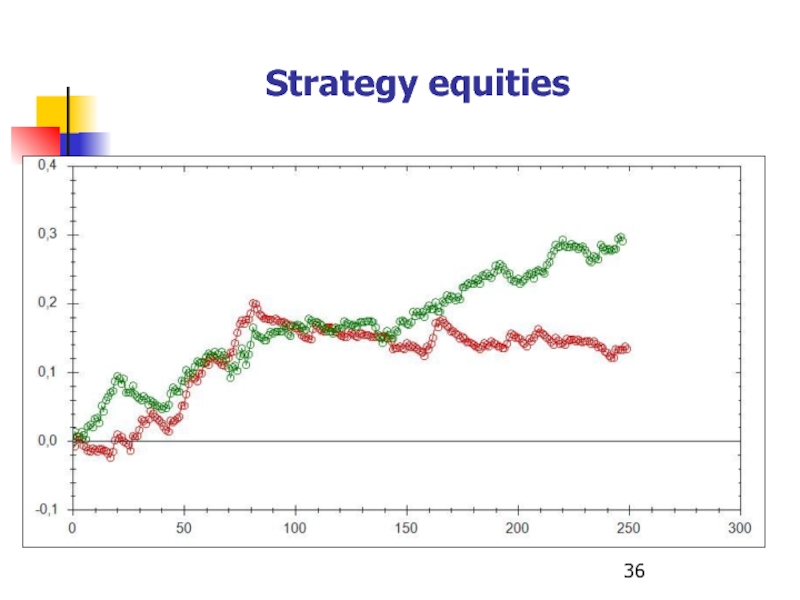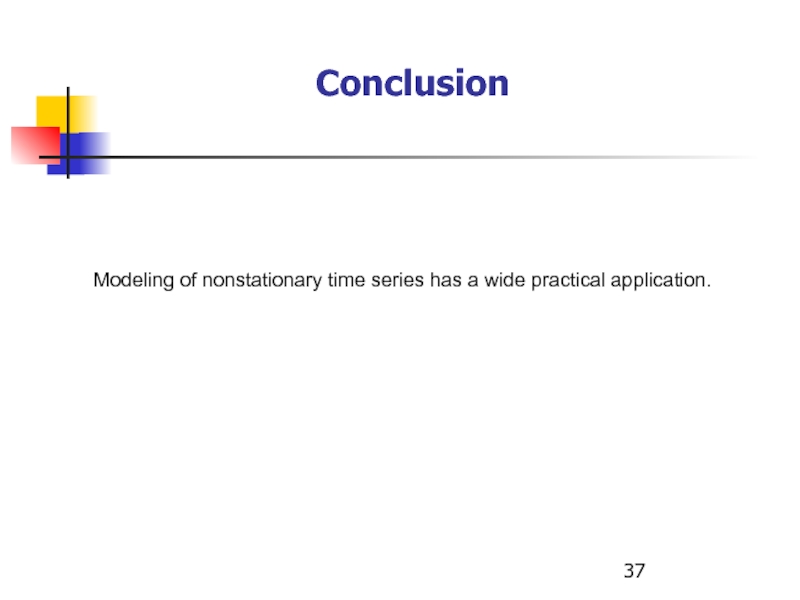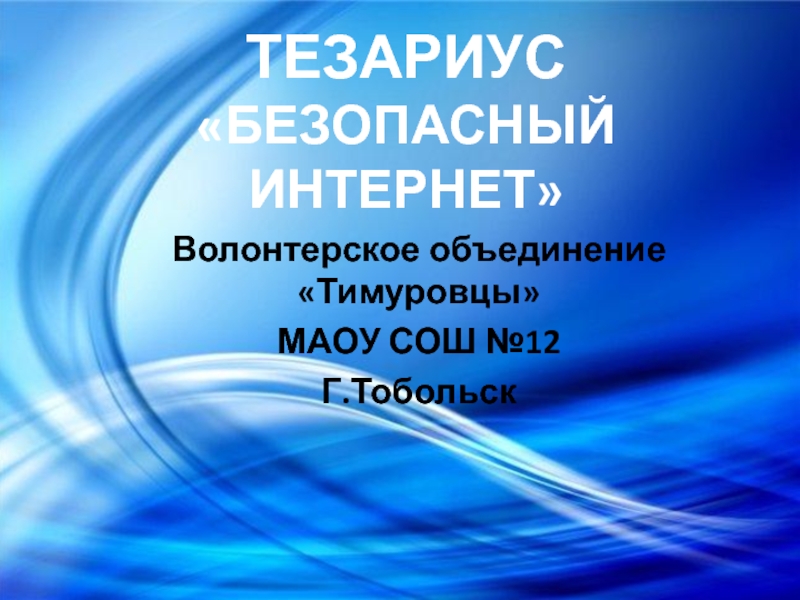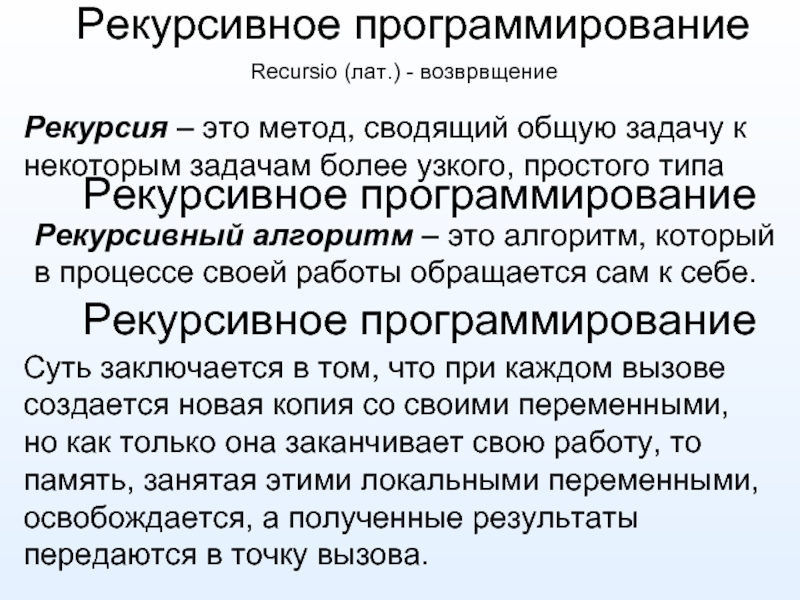- Главная
- Разное
- Дизайн
- Бизнес и предпринимательство
- Аналитика
- Образование
- Развлечения
- Красота и здоровье
- Финансы
- Государство
- Путешествия
- Спорт
- Недвижимость
- Армия
- Графика
- Культурология
- Еда и кулинария
- Лингвистика
- Английский язык
- Астрономия
- Алгебра
- Биология
- География
- Детские презентации
- Информатика
- История
- Литература
- Маркетинг
- Математика
- Медицина
- Менеджмент
- Музыка
- МХК
- Немецкий язык
- ОБЖ
- Обществознание
- Окружающий мир
- Педагогика
- Русский язык
- Технология
- Физика
- Философия
- Химия
- Шаблоны, картинки для презентаций
- Экология
- Экономика
- Юриспруденция
Modeling of nonstationary time series using nonparametric methods презентация
Содержание
- 1. Modeling of nonstationary time series using nonparametric methods
- 2. Basic concepts
- 3. Let SDFD is
- 4. Solved problems Developing of a nonparametric indicator
- 5. Practical use Earthquake research Medicine Text analysis Telecommunications Stocks market
- 6. Why is it important to take in
- 7. The classical theorems on convergence
- 8. Methods of the nonstationary time series analysis
- 9. Nonparametric comparison of samples
- 10. Distribution function as random value If random
- 11. Agreed level
- 12. The agreed level of
- 14. The ALS in the
- 15. If J> 1, the series is nonstationary; if J
- 16. The Fokker-Planck equation for a SDFD
- 17. From the solution of the
- 18. Criteria for the correct generation of the
- 19. Practical examples Example 1 - earthquake statistics
- 20. Series ALS
- 21. Nonstationary index
- 22. Gutenberg-Richter law
- 23. Dynamics of
- 24. Autocorrelation analysis
- 25. The values
- 26. The model
- 27. Nonstationary distributions
- 28. Earthquake statistics
- 29. Example 2 -
- 31. Example 3
- 32. Problems types Selection
- 33. Selection of system parameters by historical
- 34. Two types of trajectiories beam generation
- 35. Trajectories beam example
- 36. Strategy equities
- 37. Conclusion Modeling of
- 38. Thank you for attention!
Слайд 2Basic concepts
assumption 1. Time series values x(t) are uniformly
defenition 1. SDF F(x,t; N) – selective distribution function of the time series fragment
defenition 2. - distance between two samples of length N as norm C
defeniton 3. G(ρ,N) – distribution function of distances between two samples of length N
The SS in the norm of C for stationary VDFs does not depend on the type of distribution and is calculated from the Kolmogorov function
defenition 4. SDFD f(x,t; N) – selective distribution function density of the time series fragment
Слайд 3
Let SDFD is a histogram uniformly divided into
SDFD as a Histogram
Слайд 4Solved problems
Developing of a nonparametric indicator of a breakdown for a
Creating of a model of distribution function evolution using the empirical kinetic equation;
Developing of the method of stochastic process trajectories set generation.
Слайд 6Why is it important to take in account the non stationary
All theorems for estimating the confidence interval are proved only for the stationary case
Слайд 7The classical theorems on convergence
Т1. (Glivenko) Selective disribution
Т2. (Kolmogorov) If the general distribution is continuous, than the statistic
converges to the Kolmogorov function:
Слайд 8Methods of the nonstationary time series analysis
Ordinary least squares.
Time series cointegriation,
Autoregressive models (Dickey-Fuller, 1979).
Adaptive models of time series: multiparameter models of short-term forecasting(Holt,Winters, 1990-2000).
All these models operate directly with the elements of the series and predict its values. The distribution function of the series is not studied. The results depend on the length of the sample and the current time.
Слайд 9
Nonparametric comparison of samples
Let the random variables have a
Слайд 10Distribution function as random value
If random value has distribution function F(x),
the distribution function F(x) considered as random value by itself has a uniform distribution on [0;1]
And this mean, than the quantile of uniformly distributed function is a function that depends lineary on x
Слайд 11
Agreed level of significance (ALS)
At what distance should
Consider the distanse r between the samples as random value. Its disribution function u=F(r) as random value is uniformly disributed. So The level of significance agreed upon with the experiment as a quantile of a uniformly distributed random value is a function that depends linearly on the distance between the samples, i.e. α = ε.
In norm C, two samples of length N, the distance between which is ε, are different at the significance level α, if
Слайд 12 The agreed level of significance (stationarity) in the
ALS in norm C
Слайд 13
On the left: a series of distances between
Example of ALS calculation
Слайд 14 The ALS in the norm of C for
Tabulation of the stationary ALS
Слайд 15 If J> 1, the series is nonstationary; if
This approach allows us to introduce not the a priori, but the actual level of separation of samples in a sliding window, when the number of measurements over distributions is much larger than one.
Nonstationary index in the norm of C
The ratio of the fraction of distances exceeding the empirical ALS is considered to the proportion of distances exceeding the agreed level of significance in the norm of C:
Слайд 16
The Fokker-Planck equation for a SDFD
The sample mean and
Слайд 17 From the solution of the F-P equation , we
We generate a uniformly distributed series
Non-stationary trajectory
is constructed by the inversion formula of a strictly increasing continuous function:
Method of a non-stationary trajectory generating
Слайд 18Criteria for the correct generation of the ensemble
Let we
SDFD , different from fact
Consider distances:
ALS r* must be equal to the AlS of the of the original series.
ALS must be equal to the AlS and both are smaller than ALS r*.
Слайд 19Practical examples
Example 1 - earthquake statistics
In problems of earthquake prediction the
and distribution functions of time intervals between successive events. These functions shows growth or decrease of seismic activity.
We have studied the nonstationarity of these distributions
We have taken a time series of earthquake magnitudes in Japan from 1916 to January 2011 according to the regional catalog JMA
(Japan Meteorological Agency)
Gutenberg–Richter law expresses the relationship between the magnitude and total number of earthquakes: lg(N) =a-b*M
Слайд 22
Gutenberg-Richter law for two samples
This comparison shows that
Слайд 23
Dynamics of the slope angle in the Gutenberg-Richter law
The sequence of sample slopes logarithm of the Gutenberg-Richter curve by
by sliding length N=1000.
Слайд 24
Autocorrelation analysis of the slope angle
Dependence of
Слайд 25
The values of the steady-state coefficients of autocorrelation depending on
The periodicity of the autocorrelation coefficient dependence on the lag shows the presence of short-wave and long-wave quasiperiodic processes, by which the oscillatory behavior of the slope coefficient can be approximated.
Слайд 26
The model of the time series b(n)
The dynamics
Where is a series of residues, the autocorrelation of which (for any lags) does not exceed 0.013 in absolute value, the relative mean square is 0.006, and the distribution is approximated fairly well by a normal .
Слайд 27
Nonstationary distributions of magnitudes
it was found that the
magnitude is due to the fact that the parameter in the law of the Gutenberg-
Richter depends on time, but forms a stationary time series; this
series can be represented as a superposition of two dynamical systems with
periodic behavior and a normally distributed residue that has
low amplitude
Слайд 28
Earthquake statistics
results
We analyzed the stationary level of JMA
time intervals between events. It was shown, that these distributions are nonstationary
and the time dependence of Gutenberg – Richter law parameter could be
represented as a superposition of two quasi-periodical dynamical systems with short
and long periods
Слайд 29
Example 2 - SIR statistics for analysis of 5G networks
In the static mode, the SIR is analyzed by combinatorial geometry methods, but if the subscribers are in motion, then the SIR depends not only on the density of the subscribers and the shape of the region, but also on the law of motion. In many cases, the motion is stochastic and can be represented as diffusion with drift ("customer wander"). Then the trajectories of the receiving and transmitting devices are naturally modeled with the help of a suitable F-P equation:
Слайд 30
From the known distribution function f (x, t),
Time series SIR (left) and DF SIR (right))
Слайд 31
Example 3 - development of a trading system
There is
Слайд 32 Problems types
Selection of system parameters by historical data
Risk-management of
Слайд 33 Selection of system parameters by historical data
A small
However, a large volume contains in itself not current trends.
It is more efficient to generate a beam of trajectories that correspond to evolving samples in accordance with how selective distributions of price increases change.
Слайд 34 Two types of trajectiories beam generation
Generation by historical change
Generation by forecast using Fokker-Plank equation. (Вставить формулу горизонта пересчета, когда расхождение привысит СУС)

